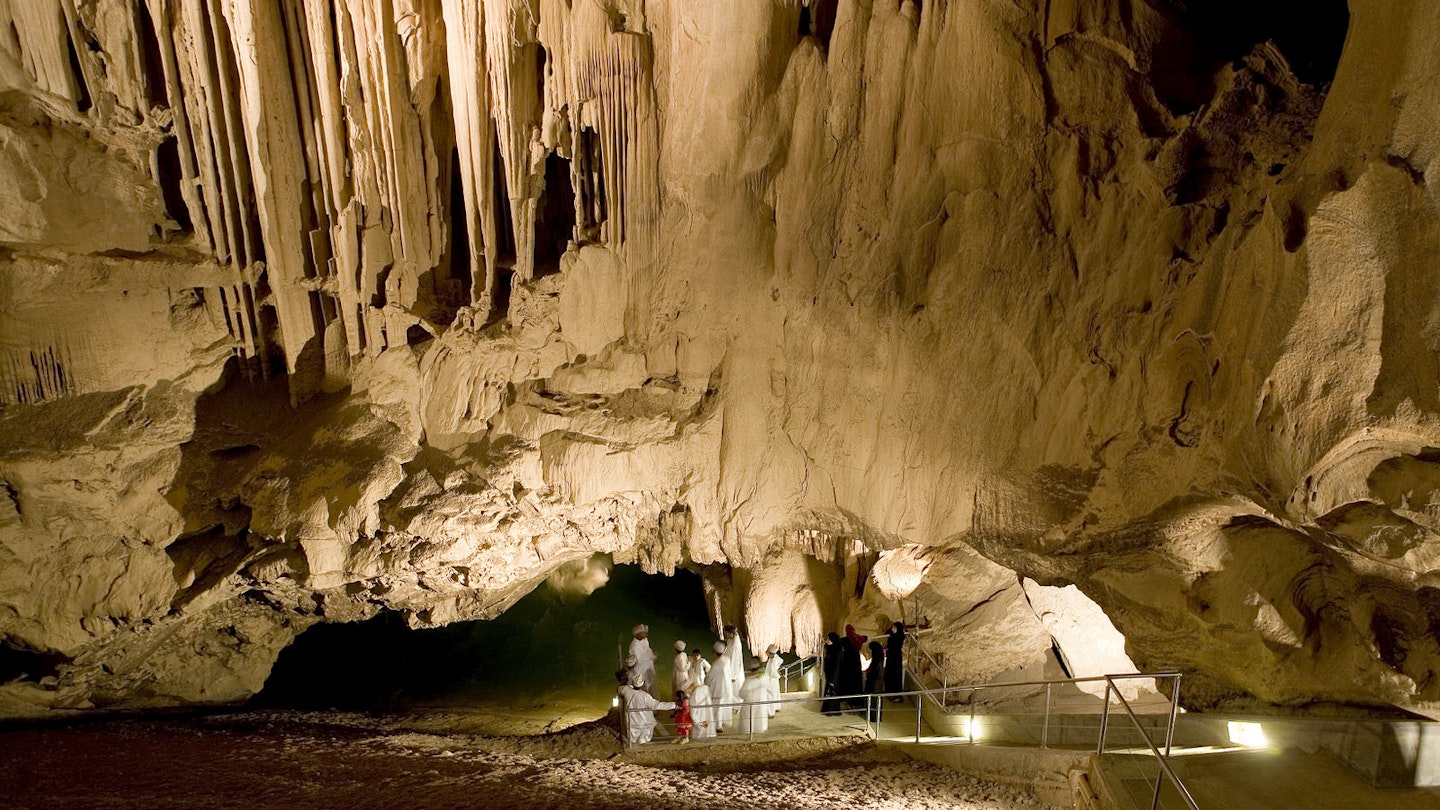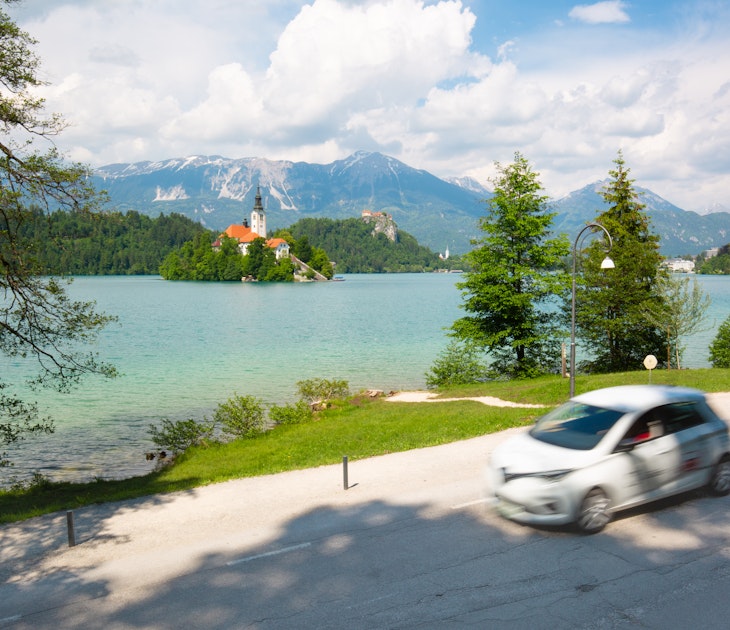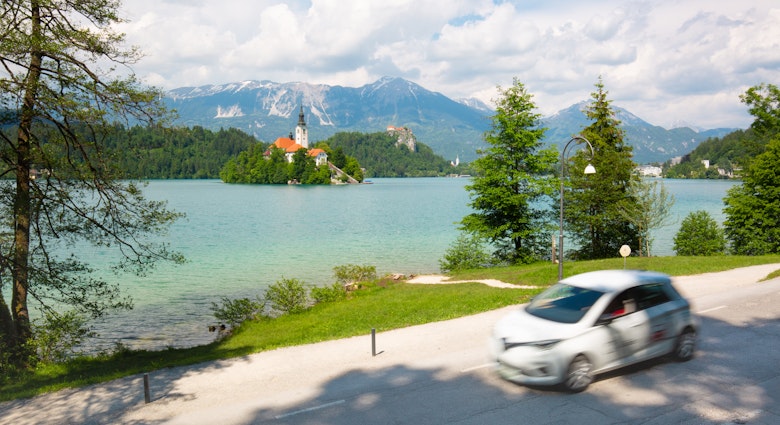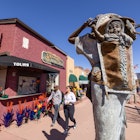Stretching from the lunar-like Hajar Mountains in the north to lush and temperate city of Salalah in the south, the Sultanate of Oman is one of the lesser-known treasures of the Arabian Peninsula. But above the ground is only half of the story.
Oman is hollowed out with incredible natural underground playgrounds, including the second largest underground chamber in the world, called Majlis Al Jinn, or 'spirits’ meeting place'. Although currently shut to the public for redevelopment, there are plenty of others that are suitable for beginners and experienced spelunkers. Here are our favourite places to explore.

Al Hoota Cave
Al Hoota Cave, located near the Jebel Shams mountain close to the northeastern town of Al Hamra, is the only cave that has daily organised tours suitable for all adults and older children (book in advance). Al Hoota is a two-million-year-old complex comprising two lakes (one an impressive 800m long) and a series of huge underground caverns. Oman’s underground world teems with life, and you will be sharing the depths with more than 100 species of animals including bats, hunter spiders and water beetles, as well as a rare type of blind fish called garra barreimiae. The 45-minute tour whisks you round 10% of the 4.5km long cavern, long enough for you to get a sense of the majesty hidden below your feet.
Hoti Cave
If a guided tour is too tame, Hoti Cave is a 2.7km tunnel also near Al Hamra that runs under the Hajar Mountains. There are two entrances, Al Fallah and Al Hota; access to the former is reached by a fairly easy 20-minute hike to the large entrance beneath the Hajar cliff’s overhang, while the latter should only be attempted by experienced spelunkers who have a guide, safety gear and other climbing equipment. Once inside, you will need torches and a sense of adventure: the hardest part is getting there. The tunnel, whichever way you get there, is worth the scramble. The rock strata, stalactites and stalagmites below reveal the ancient history of the area, through their distinctive red, yellow and pink coloured bands, formed as different sediments settled over the millennia and compressed into rock. Eager explorers can continue 1km on through the tunnel to a huge underground cavern called 'Cairn Hall', said to be full of bats.
Moqal Cave
Despite Oman being arid most of the year, the country is pockmarked with wadis (dry river beds), which can flood very quickly when it rains. To see some of the country’s serious water power up close head to Moqal Cave at Wadi Bani Khalid. This is one of the area’s greenest wadis, with plenty of natural pools and waterfalls to cool off in. The entrance to the cave is a small lateral slit in the rock face; make sure you take torches to see the underground rivers and falls that lie hidden inside the actual cave. This is an easier cave to explore than Hoti, but still difficult to find without a guide.
Ettein Cave
For a more relaxed experience, Ettein Cave, around 10km from Salalah, is made up of two enormous chambers and is the largest and most well-known cave in the southern region of Oman. The entrance is an easy walk halfway up a hillside off the main Salalah-Ettein road; take a picnic and enjoy the lush green scenery. Anyone who is relatively fit should be able to attempt this one, and once inside the gigantic cave expect to see the colossal stalagmites -- watch out for the odd creepy crawly!
Booking a tour
One of the reasons why Oman is still so unspoilt and its caves mostly left for individual exploration is that there is a shortage of organised information about most of these sites. Most caves in Oman are not signposted or marked and will not be regulated in any way, which makes you feel like the first one to discover them. To get the best out of your adventure, always book through a local guide or tour operator. Omani tour companies can create bespoke trips, depending on what region you are looking to visit and how much effort you want to put in to getting underground. Most caves detailed above can be explored on day trips from Muscat city, but for a more of a wilderness or eco-experience, combine them with a camping trip.











